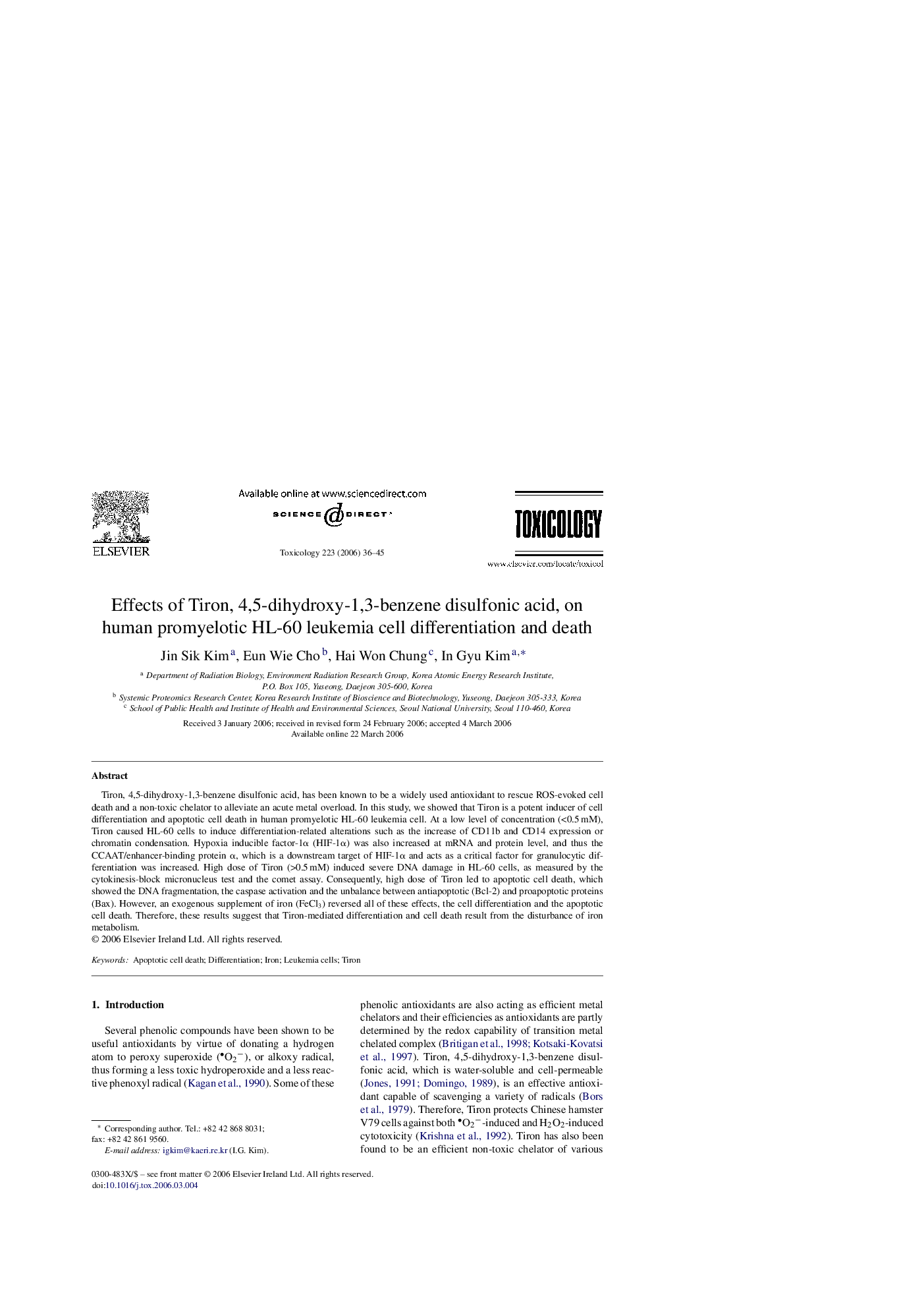| کد مقاله | کد نشریه | سال انتشار | مقاله انگلیسی | نسخه تمام متن |
|---|---|---|---|---|
| 2598255 | 1562433 | 2006 | 10 صفحه PDF | دانلود رایگان |

Tiron, 4,5-dihydroxy-1,3-benzene disulfonic acid, has been known to be a widely used antioxidant to rescue ROS-evoked cell death and a non-toxic chelator to alleviate an acute metal overload. In this study, we showed that Tiron is a potent inducer of cell differentiation and apoptotic cell death in human promyelotic HL-60 leukemia cell. At a low level of concentration (<0.5 mM), Tiron caused HL-60 cells to induce differentiation-related alterations such as the increase of CD11b and CD14 expression or chromatin condensation. Hypoxia inducible factor-1α (HIF-1α) was also increased at mRNA and protein level, and thus the CCAAT/enhancer-binding protein α, which is a downstream target of HIF-1α and acts as a critical factor for granulocytic differentiation was increased. High dose of Tiron (>0.5 mM) induced severe DNA damage in HL-60 cells, as measured by the cytokinesis-block micronucleus test and the comet assay. Consequently, high dose of Tiron led to apoptotic cell death, which showed the DNA fragmentation, the caspase activation and the unbalance between antiapoptotic (Bcl-2) and proapoptotic proteins (Bax). However, an exogenous supplement of iron (FeCl3) reversed all of these effects, the cell differentiation and the apoptotic cell death. Therefore, these results suggest that Tiron-mediated differentiation and cell death result from the disturbance of iron metabolism.
Journal: Toxicology - Volume 223, Issues 1–2, 1 June 2006, Pages 36–45